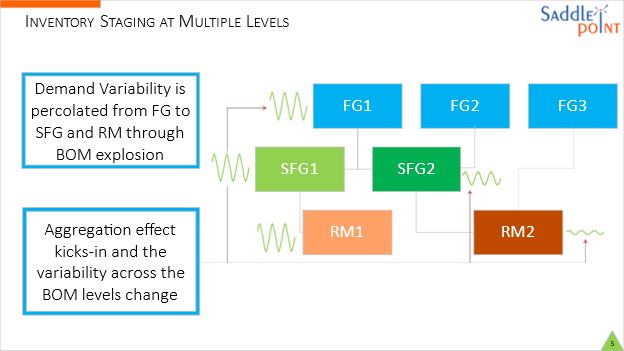- November 12, 2021
- Posted by: Saddle Point
- Category: Planning and Optimization, Supply Chain Analytics, Supply Chain Digitization


On Mumbai’s marine drive, a peculiar sight catches the eye—a collection of four-legged concrete blocks positioned along the shoreline. These structures, known as Tetrapods, serve a vital purpose by breaking the force of the waves and dissipating their energy. Just as Tetrapods act as shock absorbers for shorelines, production lines require their own form of buffers to withstand market fluctuations and ensure smooth operations.
Production Lines from Market Volatility:
Market fluctuations can significantly impact production lines, disrupting their flow and reducing overall efficiency. To safeguard against these uncertainties, we need to establish Tetrapods in the form of Raw Material (RM) safety stocks. These safety stocks act as a cushion, absorbing market shocks and allowing production lines to function seamlessly. Without such buffers, the resulting flux in production can hinder the factory’s throughput.
The Thumb-Rule Approach
In many organizations, safety stock levels are determined based on thumb-rules—general guidelines rather than precise calculations. Regardless of the product or echelon, these thumb-rules often prescribe safety stock durations ranging from 30 to 90 days. Unfortunately, this simplistic approach lacks the rigor of statistical analysis, leading to either excessive inventories or the propagation of variabilities downstream.
Addressing Demand and Supply Variabilities
Safety stocks are designed to shield systems from the fluctuations in demand and supply. However, determining the demand variability for RM/PM (Raw Material/Product Material) presents a challenge, as there is no direct demand for these materials. Instead, the variabilities must be propagated from the Finished Goods (FG) level through the Bill of Materials (BOM). Fortunately, a Multi-Level Inventory Optimizer simplifies these complex calculations, enabling accurate determination of appropriate safety stock levels.
Optimizing Inventory Staging


By right-sizing inventory, substantial savings of approximately 25% can be achieved. For a company with a turnover of 500 Cr., a rough estimate suggests potential annual savings of around 3 Cr. These savings lie dormant within the system, waiting to be realized through minor adjustments and efficient housekeeping practices.
Incorporating these optimized inventory staging methods will not only enhance operational efficiency but also unlock significant cost savings for your company.
